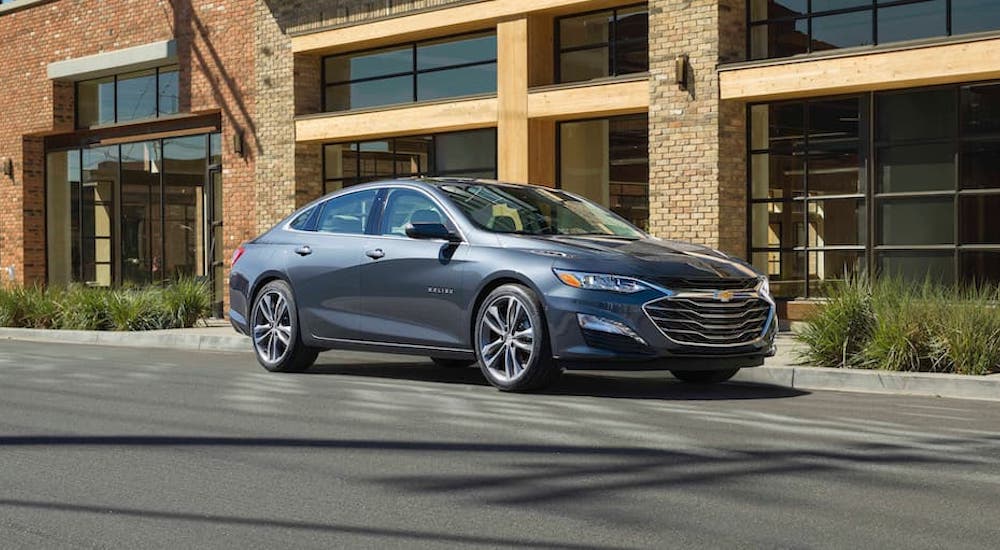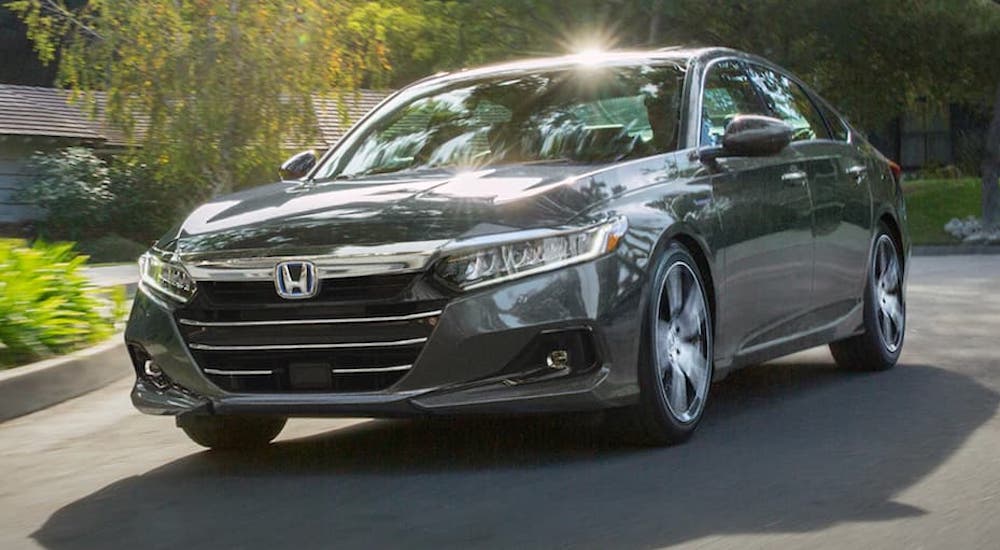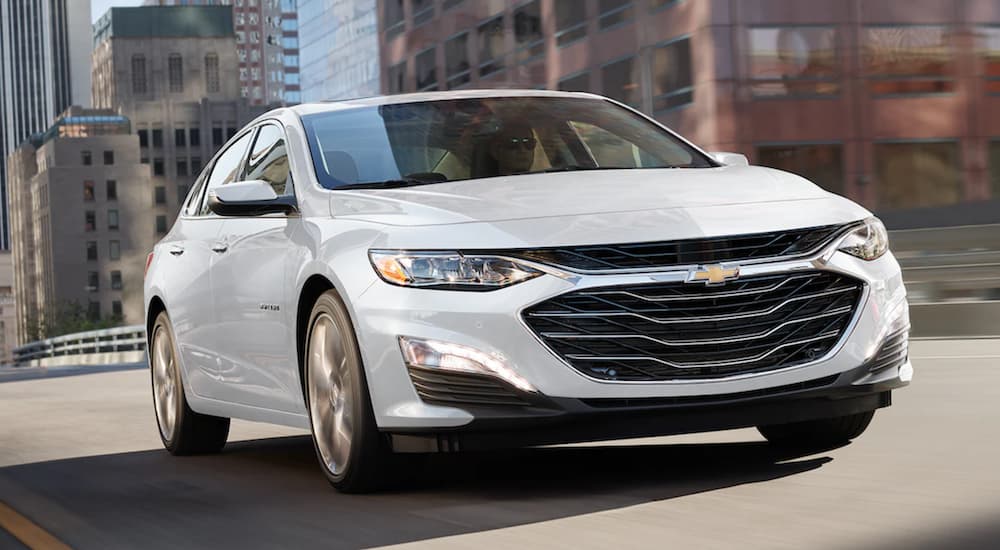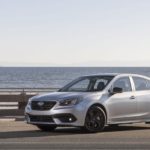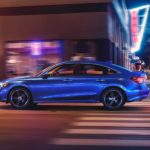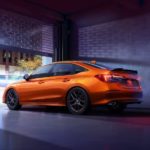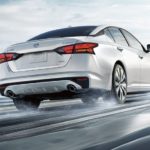Where sedans were once the kings of the road here in the United States, looking around these days, you’d assume that SUVs and trucks are all people care about. They certainly make up the majority of what American car companies are producing. Plus, with brands like Ford completely eliminating their sedans, it can feel like this is a segment long past its prime. And yet, sales of sedans aren’t nearly as low as you’d expect––about 15 million vehicles were sold last year, and of those, 3.4 million were passenger cars––about 22%. So yeah, trucks and SUVs definitely account for the majority of sales, but cars are still almost one in every four vehicles sold.
Yet, American companies have largely abandoned this market––as I said, Ford doesn’t make sedans anymore, and Chevy only makes one: the Malibu. Dodge does still have the Charger, but that’s more of a sports car than a practical sedan. So is this it? Are we hearing the death knell of the affordable American sedan? Or is there an opportunity here for something to be done and for domestic brands to get back in the game? To answer this, let’s take a look at the 2022 Chevy Malibu vs 2022 Honda Accord to see how they compare and where there’s room for Chevy to get back on top of this market.
Why the Honda Accord?
Honestly, this is a bit of an unfair comparison, but I chose it on purpose because the Accord is one of the most popular midsize sedans on the road. Last year, about 920,000 midsize sedans were sold here in the US––more than 202,000 of those were Accords. By comparison, just under 40,000 Malibus were sold last year, meaning the Accord is the second-most-popular midsize car here in America, while the Malibu is seventh.
Even though the Toyota Camry is the most popular midsize option, I felt the Accord is a better comparison because it has a lot in common (surprisingly) with the Malibu. We’ll see that they have similar engines, similar fuel economy, and other features that make them look very much alike on paper. And yet, the Accord outsold the Malibu by more than five to one. By looking at how these two models compare, we’ll get a sense of what Chevy could do differently to boost the Malibu back into the spotlight where it deserves to be.
Regarding Engines
What I find so fascinating about this comparison is that the Chevy Malibu and the Honda Accord are incredibly similar when you look at their specs. For their 2022 model years, both of these vehicles had two engines available––we’ll consider the Accord Hybrid a separate model just to keep things simple. Here are the available traditional gasoline engines on these cars and the performance they offer:
2022 Chevy Malibu
- 1.5L Turbo I-4: 160 hp and 184 lb-ft of Torque
- 2.0L Turbo I-4: 250 hp and 260 lb-ft of Torque
2022 Honda Accord
- 1.5L Turbo I-4: 192 hp and 192 lb-ft of Torque
- 2.0L Turbo I-4: 252 hp and 273 lb-ft of Torque
See what I mean? Admittedly, the standard engine on the Accord is a bit more powerful than what the Malibu starts with, but not by such a huge margin that it would explain the difference in sales. Similarly, the available engines are nearly identical, with only minor differences between them––small enough that you won’t really feel it. Both cars have Continuously Variable Transmissions pared with their standard engines and automatic transmissions for their available powertrains. Overall, the Malibu isn’t exactly lagging behind the Accord––it could have a bit more power, but it doesn’t need a major redesign or anything like that.
Fuel Economy is Vital
One of the biggest reasons a lot of people still opt for sedans is because they’re economical. Fuel economy for a midsize sedan is one of the most important specs possible since drivers want a comfortable ride that’s fun to drive and efficient. So how do these two cars compare to each other?
2022 Chevy Malibu
- 1.5L Turbo I-4: 29 MPG City, 36 MPG Highway; 32 MPG Combined
- 2.0L Turbo I-4: 22 MPG City, 33 MPG Highway; 26 MPG Combined
2022 Honda Accord
- 1.5L Turbo I-4: 30 MPG City, 38 MPG Highway; 33 MPG Combined
- 2.0L Turbo I-4: 22 MPG City, 32 MPG Highway; 26 MPG Combined
Much like with the performance on these engines, once again, we’re looking at numbers that are incredibly similar. Yes, the Honda Accord technically comes out on top with 1 MPG greater efficiency, but honestly, they’re basically identical. That kind of difference is so slight that it’s likely within the margin for error on this kind of measurement, and you’ll probably get the same kind of mileage from either vehicle in the real world. So, once more, we’re looking at differences that are so minuscule they don’t explain the massive difference in sales between these two midsize sedans.
Overall Design and Functionality
From the outside, checking out both of these cars, they both look great and have the sort of modern sedan sensibilities you’d expect. Yes, side-by-side, there are certainly differences between them, but aesthetics are so subjective that it’s hard to call one better than the other. The Malibu doesn’t look dated or overly conservative, though you could probably argue that the Accord has a sleeker overall look and feel. I’d say the Malibu could use a new design, but that’s a larger point I’ll get into further down.
In terms of functionality, both cars offer plenty of room inside for up to five passengers and are very user-friendly. The Malibu has 15.7 cu.ft. of cargo space, while the Honda Accord has 16.7 cu.ft. of cargo volume––a slight edge to the Accord, but not a massive difference. Inside, the Malibu has about 103 cu.ft. of total passenger volume, while the Accord has just over 105 cu.ft. of space for passengers. Again, the Accord has a slight advantage but nothing huge.
Tech Features Put the Accord Ahead
Where the Malibu loses the most ground to the Honda Accord is in terms of technology. Both of these vehicles have eight-inch infotainment displays standard, which is great, but the Honda system is a bit more user-friendly. The Malibu feels more dated, and its infotainment system could definitely use an update and refresh. To me, however, the biggest problem is the safety features.
The 2022 Honda Accord has a massive suite of driver-assist features standard on every trim, as do most midsize sedans on the road these days. This includes features like a Collision Mitigation Braking System, Road Departure Mitigation System, Lane Keeping Assist System, and Adaptive Cruise Control. Available options on the Accord include a Blind Spot Information System and a Head-Up Display.
Chevy is sadly lacking in this area, as the 2022 Malibu’s standard safety features are limited to traction control, airbags, and other basics. Even on its highest trim, the Premier, the driver-assist features you really want are still just options. To get features like Adaptive Cruise Control, Automatic Emergency Braking, or Lane Keep Assist, you have to pay extra for add-on packages. That’s a massive oversight; even though the Malibu starts at a significantly lower price than the Accord, you’d still expect more.
What Can Chevy Do?
Honestly, none of the Accord’s advantages are impossible to overcome, and Chevy wouldn’t have to do too much to resurrect the American midsize sedan. In fact, Chevy is already taking some of the right steps, giving the 2023 Malibu advanced driver-assist features like Automatic Emergency Braking and Lane Keep Assist with Lane Departure Warning standard on every trim. This is a great first step, but the interior still feels a bit dated compared to some of the competition. The current generation of the Malibu has been in production since 2016, and Chevy needs to redesign and update this iconic sedan.
Launching a new generation for the Malibu could revitalize it and show us something new, something to get excited about. It could also signal to other brands, like Ford, that sedans can be made by domestic companies and find success among American drivers who still want midsize cars. Whether Chevy will commit to this course of action remains to be seen; the brand could just as easily follow Ford’s lead and discontinue the Malibu. I’d prefer it goes all-in with a major update and redesign and even makes an all-electric version while it is at it, but we’ll just have to wait and see what Chevy does.
